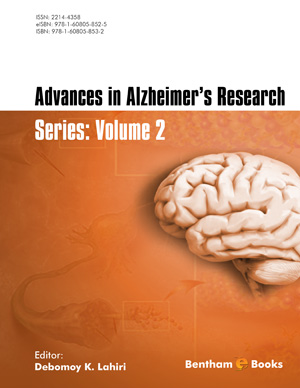Abstract
The post mortem identification of amyloid plaques, consisting of the amyloid-β (Aβ) peptide, and neurofibrillary tangles in the brains of patients still leads to the most reliable diagnosis for Alzheimer’s disease (AD). Substantial efforts have been made to identify reliable biomarkers for AD that can be used for early diagnosis of AD. Body fluids of AD patients have been investigated for their content of total or soluble Aβ(1-40) or Aβ(1-42), either using classical ELISA procedures, or non-classical assays with more innovative read-out signals, or a combination of both. The concentration of total soluble Aβ(1-42) in cerebrospinal fluid (CSF) is reduced by 40 to 50 % in AD patients compared to age-matched healthy controls, as confirmed in more than 30 studies, with both sensitivity and specificity exceeding 80 to 90 %. Thus, it was suggested that detection of low levels of Aβ(1-42) in CSF might help preclinical diagnosis. The achievable sensitivity using such CSF biomarkers, however, is 85 % or less. Therefore, these assays cannot deliver any increase in the diagnostic outcome as compared to existing algorithms based on neuropsychological and imaging modalities. Regarding the amyloid cascade hypothesis, Aβ oligomers and aggregates are directly involved in the pathologic process. The presence of Aβ aggregates in CSF could thus be the most direct and most reliable biomarker for AD and increasing efforts are undertaken to develop methods that are suitable to quantify and characterize Aβ aggregate species present in body fluids, especially in CSF. Here, we present an overview of the current status of the development of methods for Aβ aggregate specific detection and quantitation, which is an update of a previous review.
Keywords: Alzheimer’s disease, amyloid-β aggregates, biomarker, early diagnosis, prognosis, protein misfolding diseases, therapy monitoring.






















